-
CATEGORY ::
- All Seeds /
- All Clover Seeds
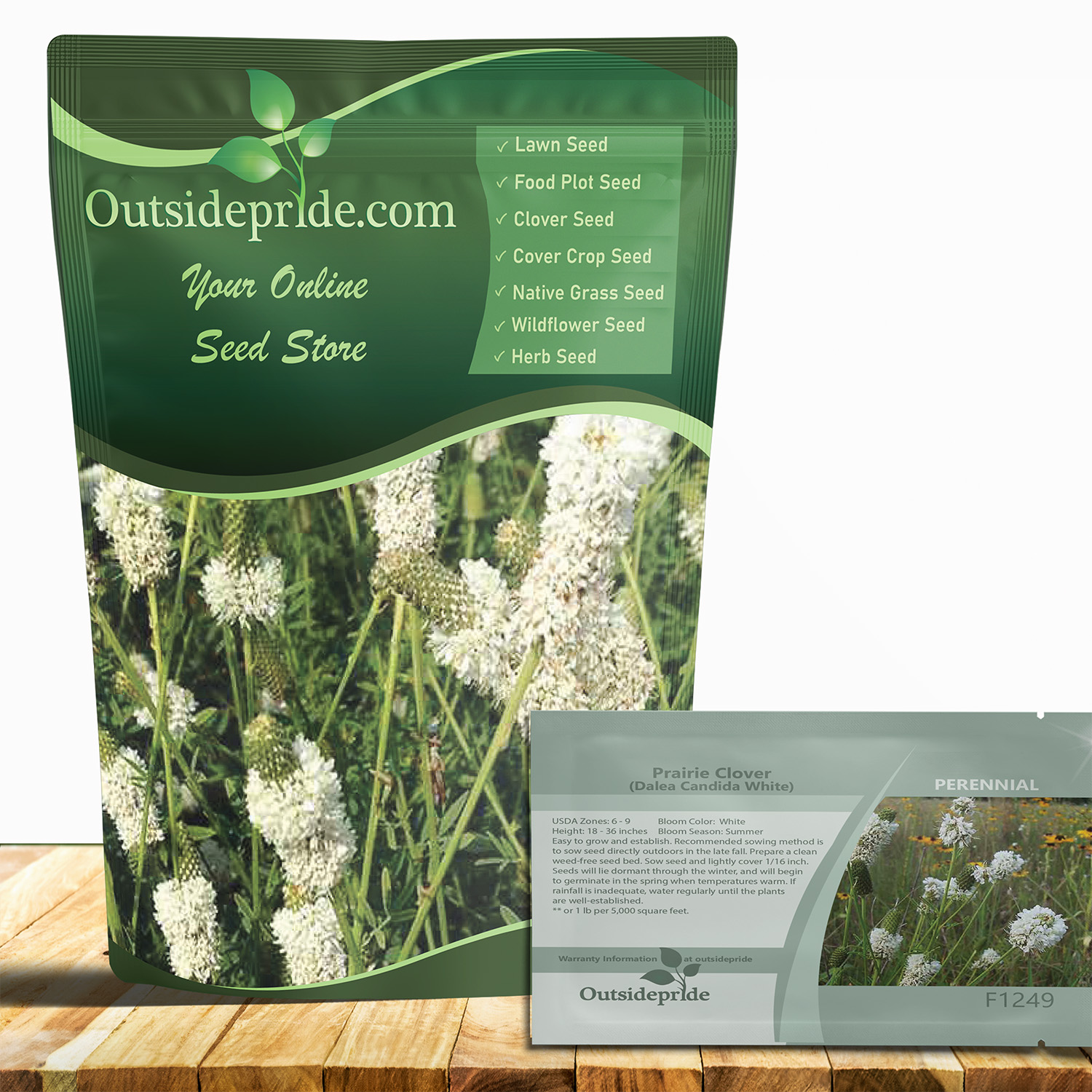

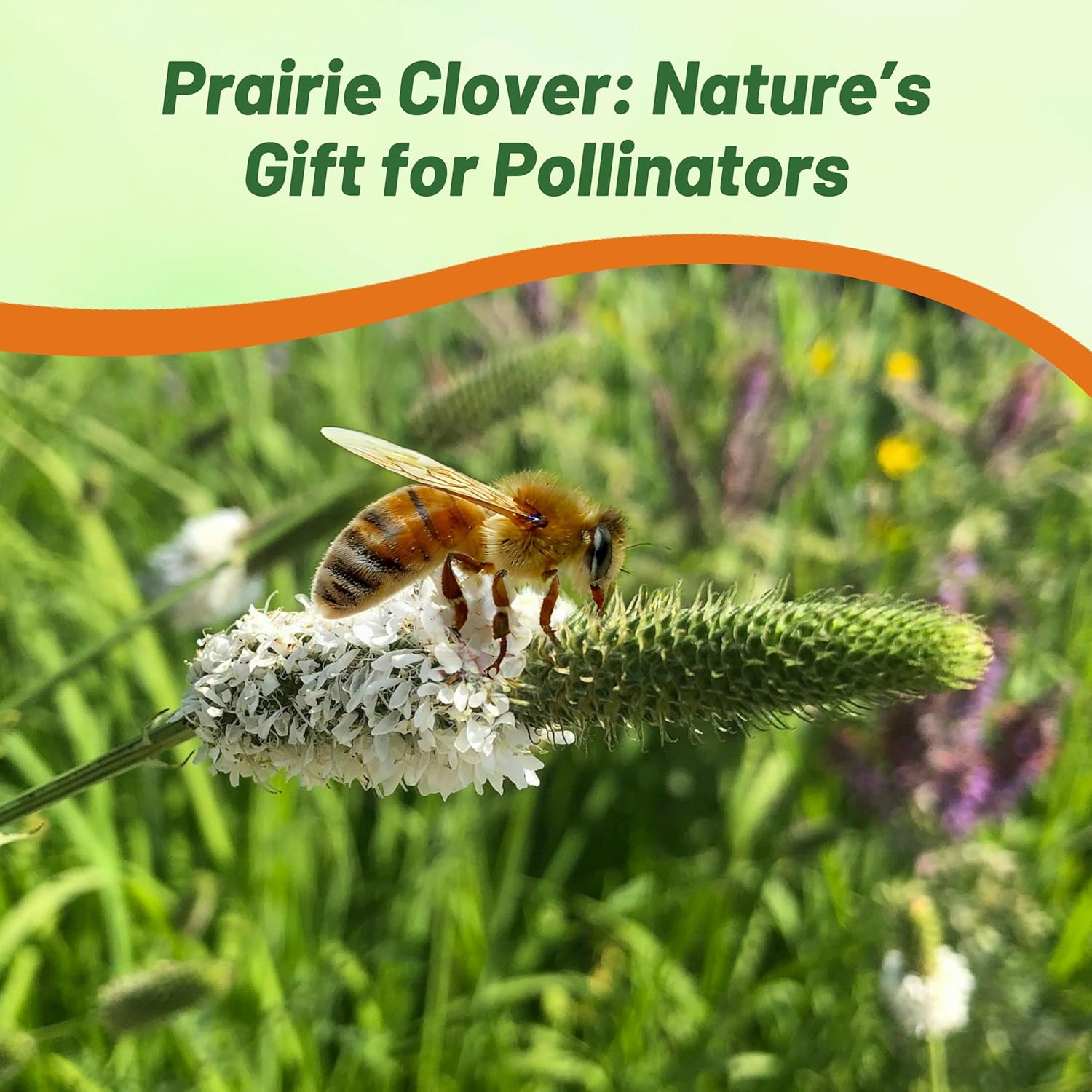
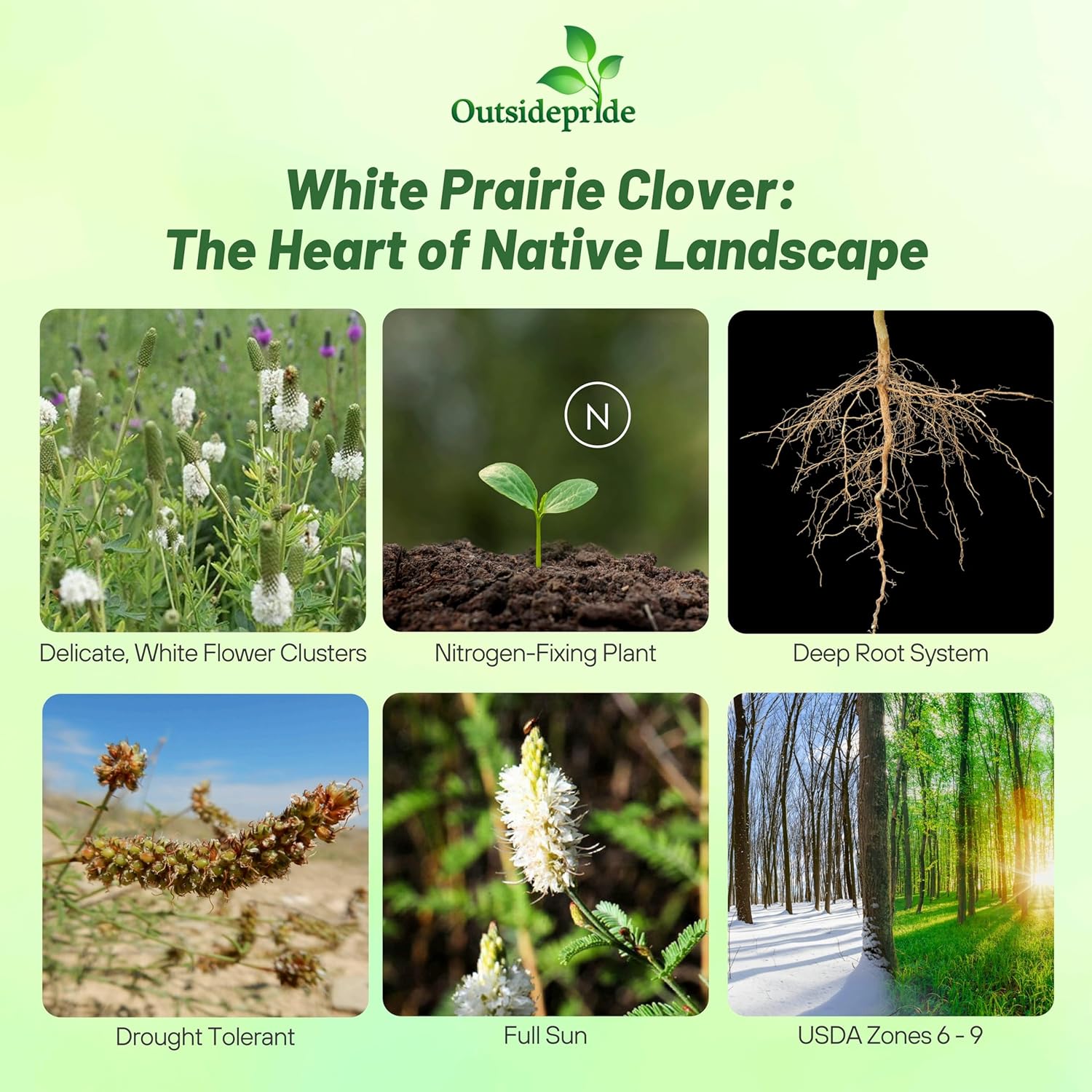
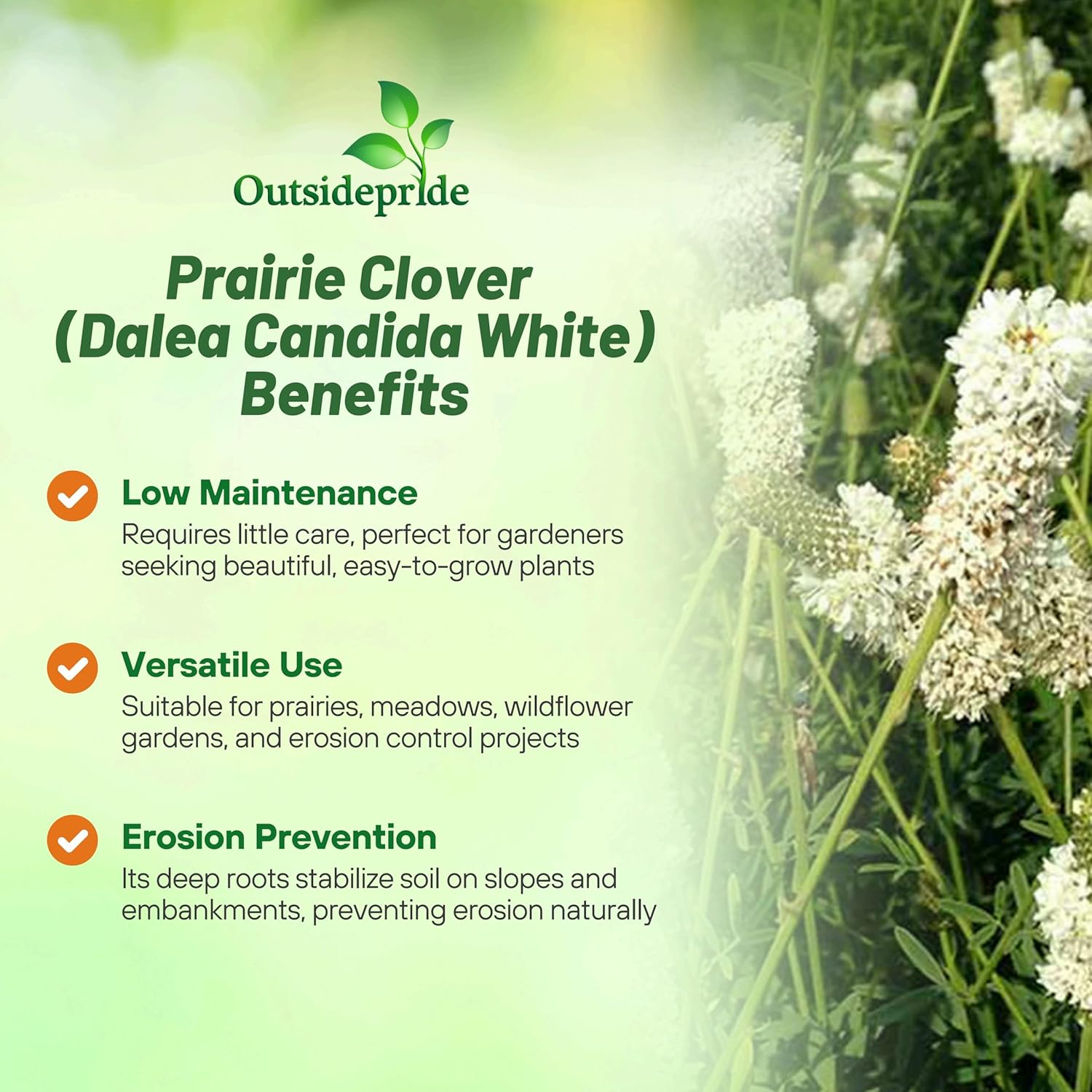
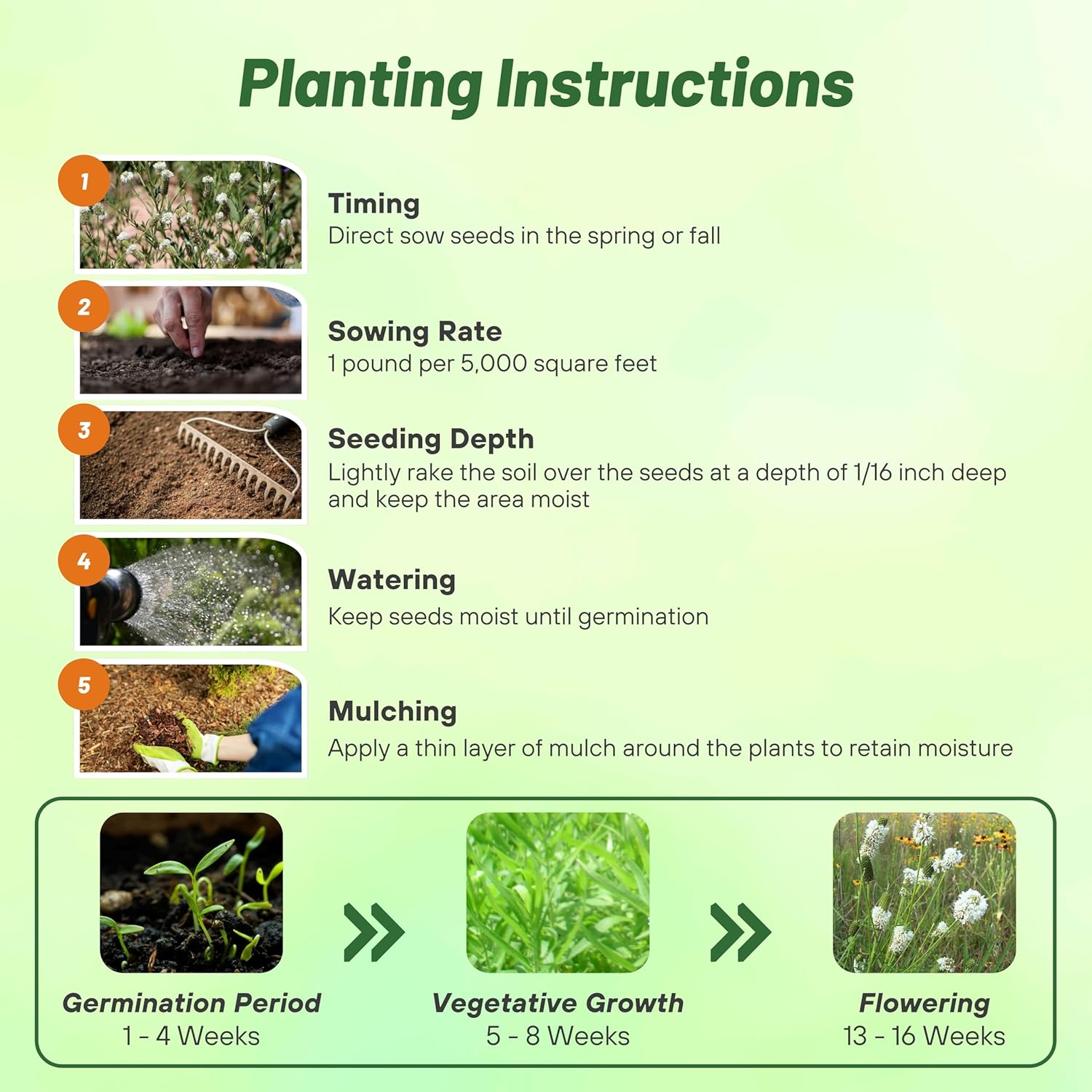
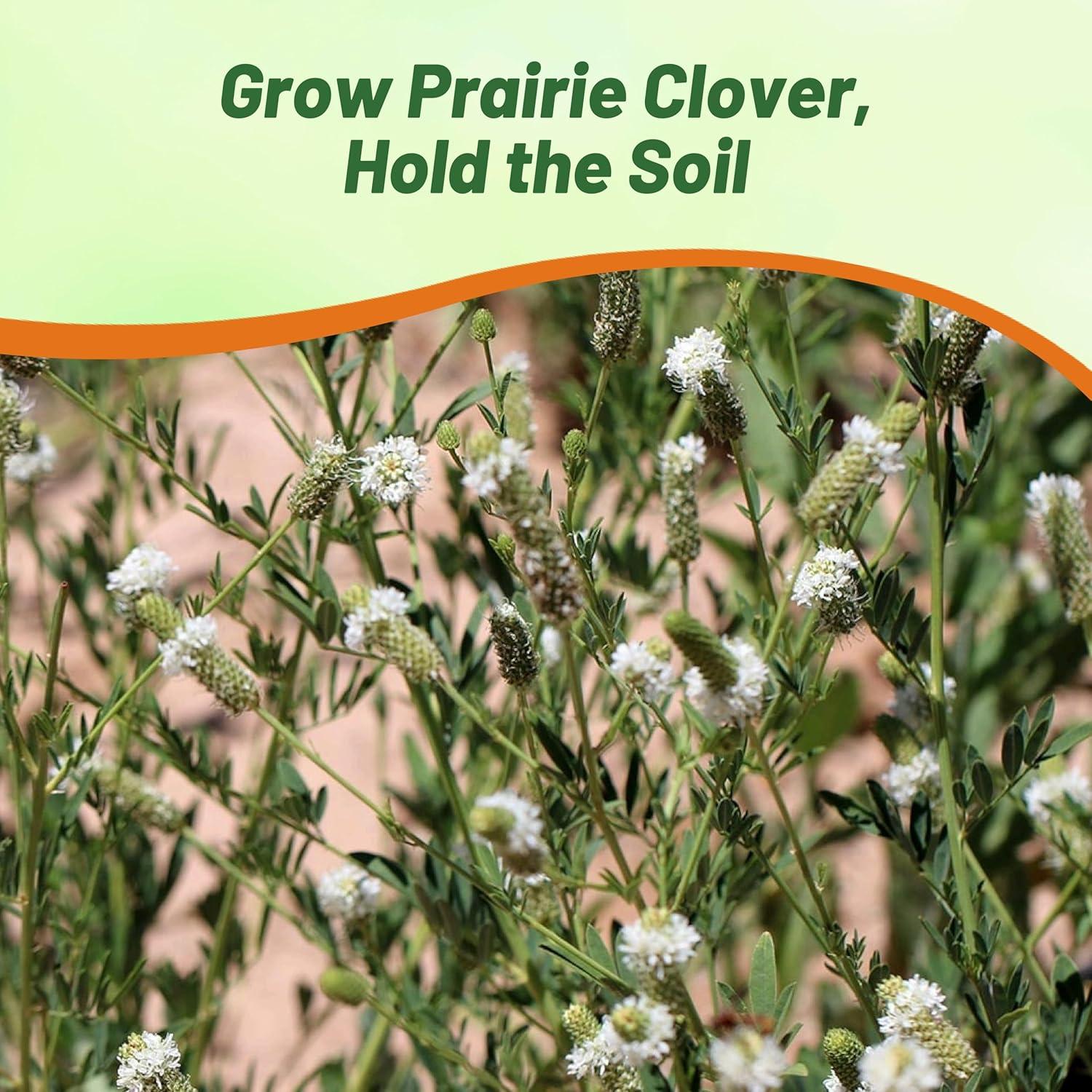

Prairie Clover Seeds - White
About...
Prairie Clover (Dalea Candida White) - Start Prairie Clover seeds for an attractive, versatile, native perennial. Prairie Clover plants have pale green foliage with leaves that can vary from 2 - 7 inches in length. Sprouting from this foliage are short spikes of white flowers which are 1 - 3 inches in height and approximately 3/4 inch in diameter.MORE CLOVER OPTIONS

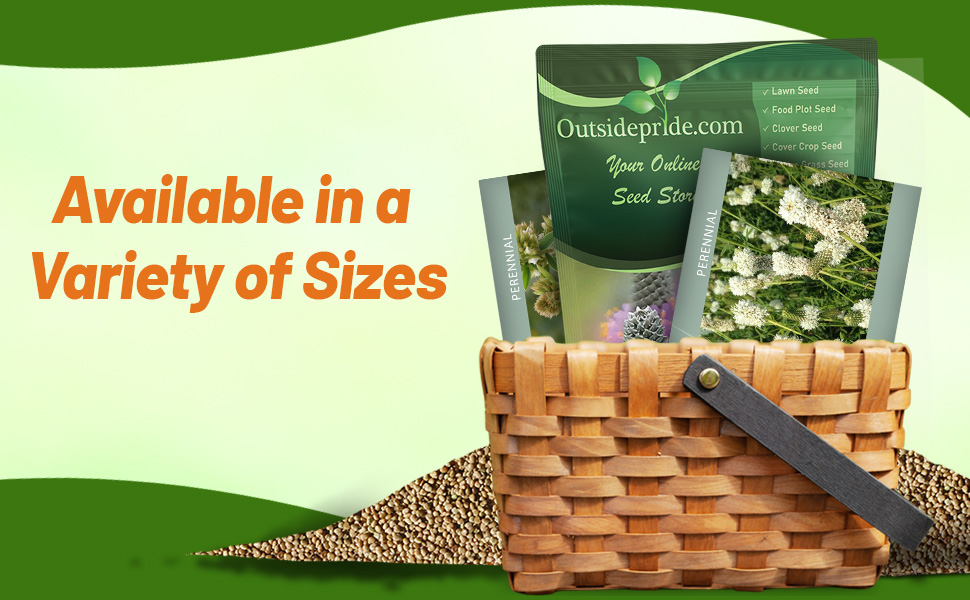
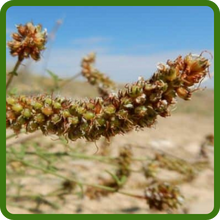
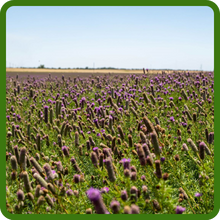
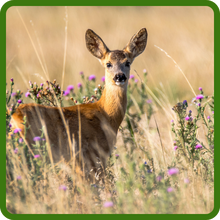
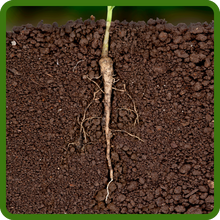
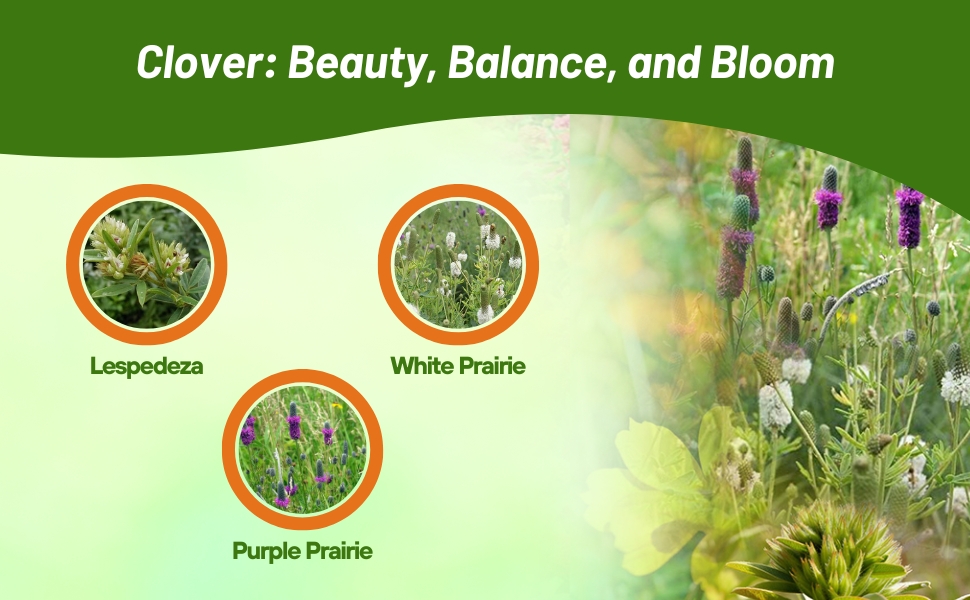
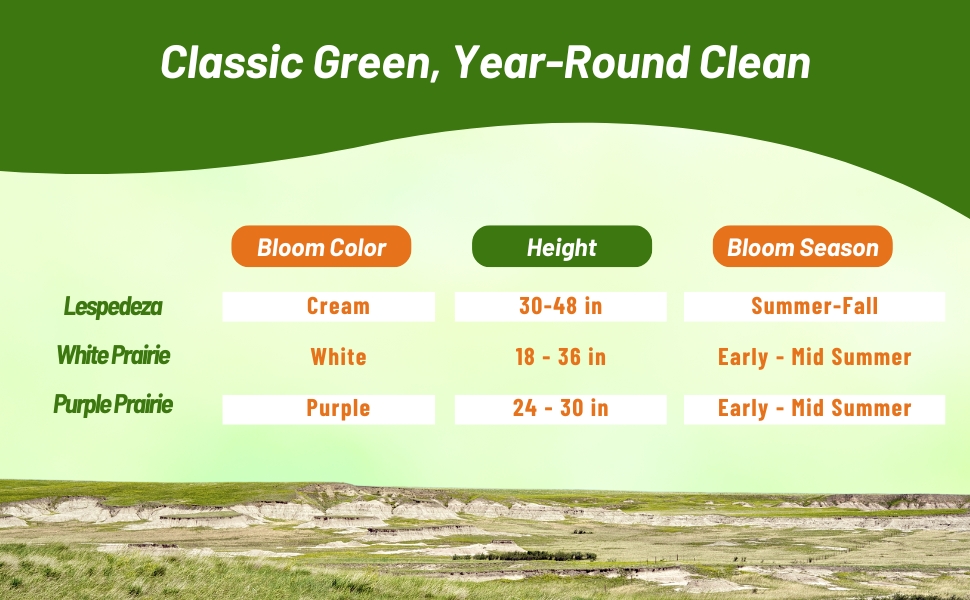
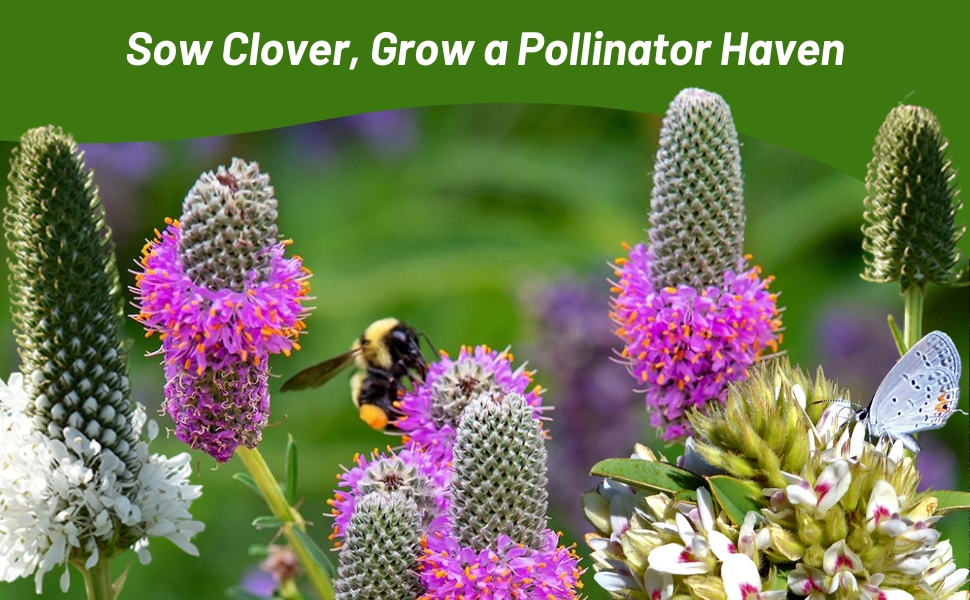
Prairie Clover (Dalea Candida White) - Start Prairie Clover seeds for an attractive, versatile, native perennial. Prairie Clover plants have pale green foliage with leaves that can vary from 2 - 7 inches in length. Sprouting from this foliage are short spikes of white flowers which are 1 - 3 inches in height and approximately 3/4 inch in diameter. The small flowers form a wreath around the bottom of the spike, which moves upward as the season progresses making White Prairie Clover very unique and attractive. The Prairie Clover seeds are lightly scented and very attractive to bees. They bloom early to mid-summer and last nearly 30 days.
Because Dalea Candida White Prairie-Clover has an extensive root system, it is not only drought tolerant, but it also is useful for erosion control on slopes, and it works well in naturalized landscapes. White Prairie Clover can have a taproot that extends up to five feet in the ground making it very drought tolerant. As a clover, and a legume, it is tolerant of poor soils and will improve the soil by fixating nitrogen. In addition, White Prairie Clover is palatable and high in protein and is readily consumed by deer and livestock.
Prairie Clover seeds are easy to grow and establish. The recommended sowing method is to sow the white Prairie Clover seed directly outdoors in the late fall. Prepare a clean weed-free seed bed. Sow the flower seed and lightly cover 1/16 inch. The Prairie Clover seeds will lie dormant through the winter, and will begin to germinate in the spring when temperatures warm. If rainfall is inadequate, water regularly until the Prairie Clover plants are well-established.
Planting Guide
TEMPERATURE
65 - 70F
AVERAGE GERM TIME
14 - 30 days
LIGHT REQUIRED
Yes
DEPTH
1/16 inch
SOWING RATE
1 pound per 5,000 square feet
MOISTURE
Keep seeds moist until germination
Flower Specifications
SEASON
Perennial
USDA ZONES
6 - 9
HEIGHT
18 - 36 inches
BLOOM SEASON
Early to mid summer
BLOOM COLOR
White
ENVIRONMENT
Full sun
SOIL TYPE
Well-drained, sandy, pH 6.2 - 7.5
LATIN NAME
Dalea candida

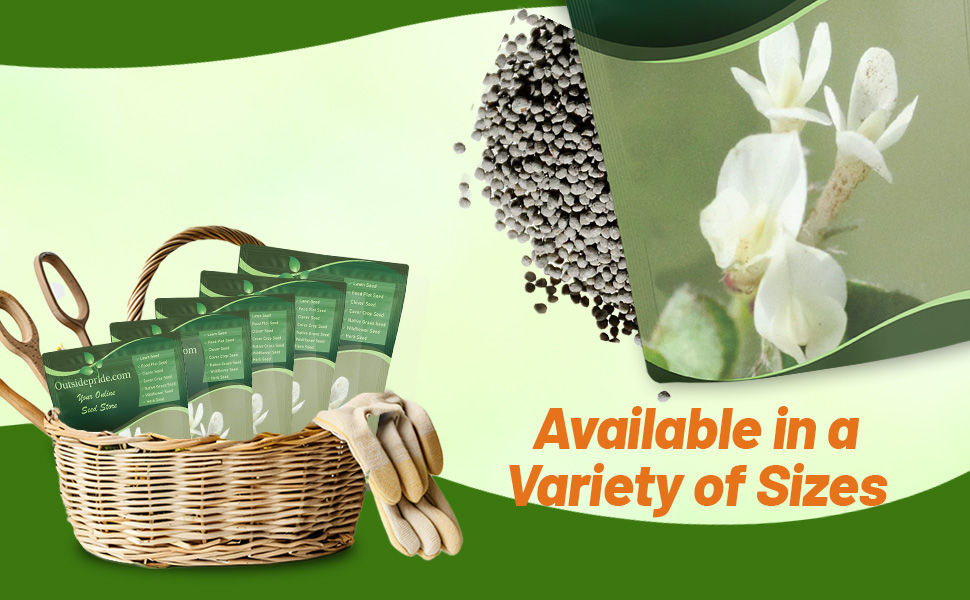
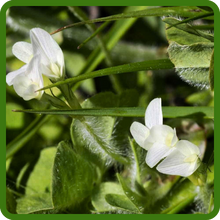
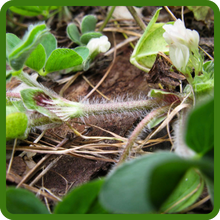
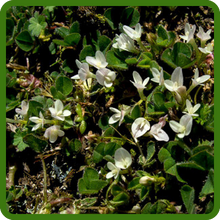
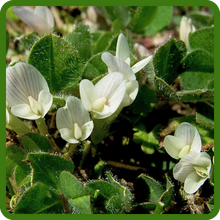
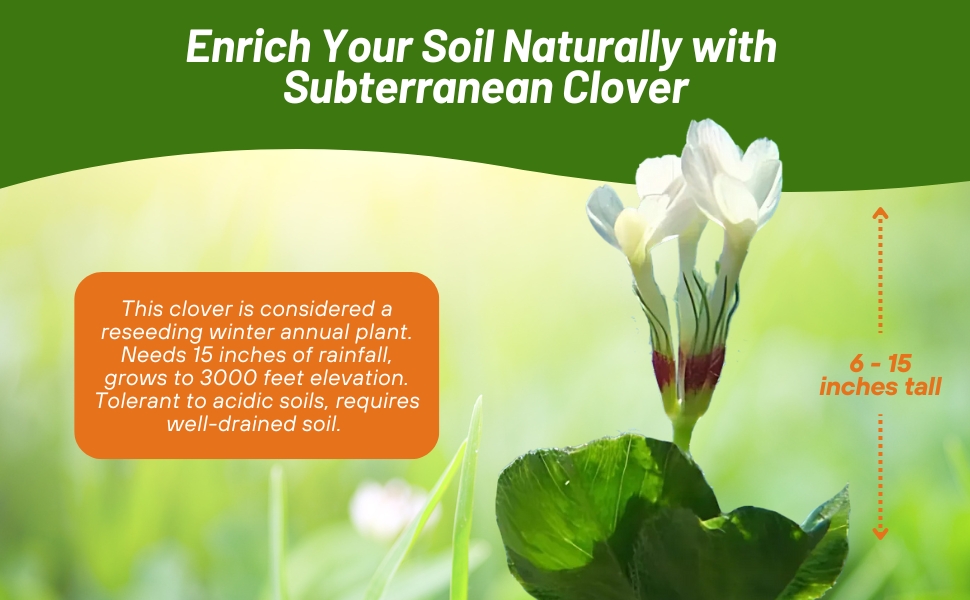
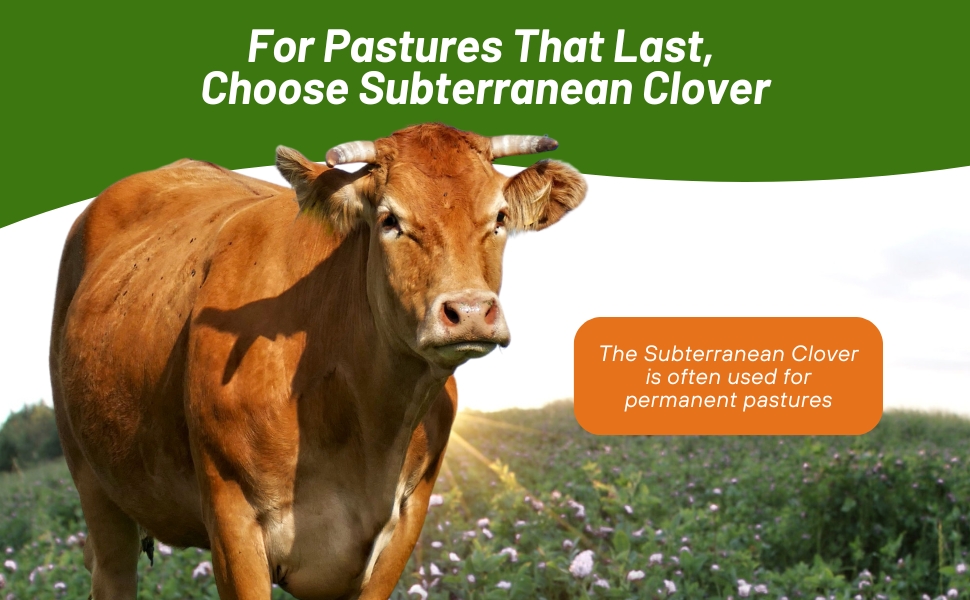
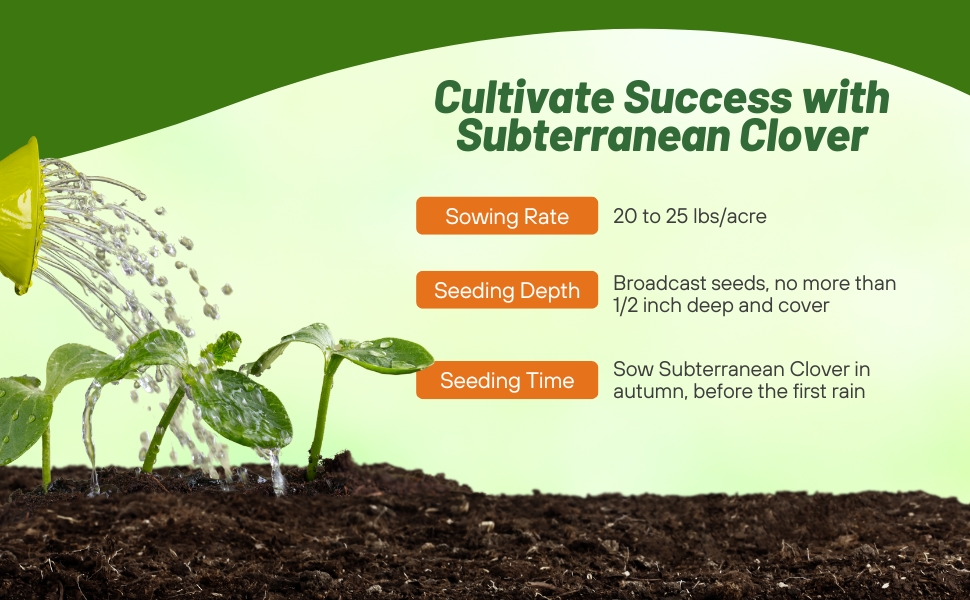
Subterranean Clover (Trifolium Subterraneum) - Subterranean clover is an annual clover well adapted to warm moist winter and dry summers. Flourishes in Australia when grown from bulk clover seeds, used as a rangeland legume in Western Oregon and California. Suitable for foothills and non-irrigated pastures. A portion of the seed head buries in the soil giving this clover its name and causes a difficult seed harvest. This clover is considered a reseeding winter annual plant. Needs 15 inches of rainfall, grows to 3000 feet elevation. Tolerant to acidic soils, requires well-drained soil. Used for permanent pastures.
Inoculated Seed - Our subterranean clover seed has been coated with an inoculant for better establishment. Nitrogen fixation is a one of the key values found in legumes and can only occur with the proper inoculation. Although many strains or Rhizobium may be present in the soil, all are not equally beneficial. With Nitro-Coat® each seed is inoculated with the correct Rhizobium strains and coated through a proven process that ensures a very high level of successful inoculation. A key to any successful establishment and early seed development is moisture. Nitro-Coat® is naturally water absorbent and helps attract soil moisture to the seed, getting your stand established quickly. This coating process which Outsidepride utilizes, assures that only the top-performing and crop-specific rhizobia will be applied to ensure your clovers reach maximum nodulation, stand establishment, and yield potential. With Nitro-Coat® each seed is inoculated with the correct Rhizobium strains and coated through a proven process that ensures a very high level of successful inoculation. The weight of the clover seeds will contain approximately 34% coating material that contains the inoculant and water holding material for better establishment and viability of the seed. There is no difference in the seeding rates between the coated and raw seed due to the increased germination and viability of the bulk clover seeds that are coated and inoculated. This coating material is not OMRI certified.
Seeding rate 20 to 25 lbs/acre.

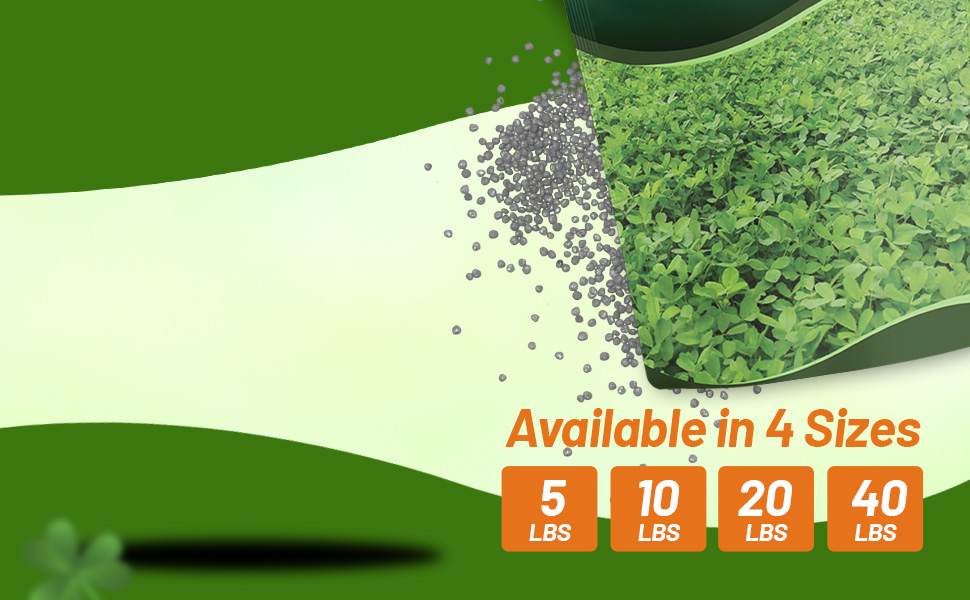
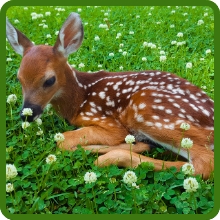
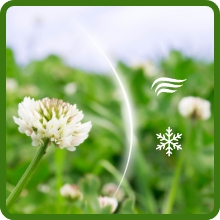
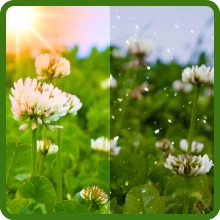
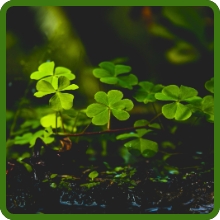
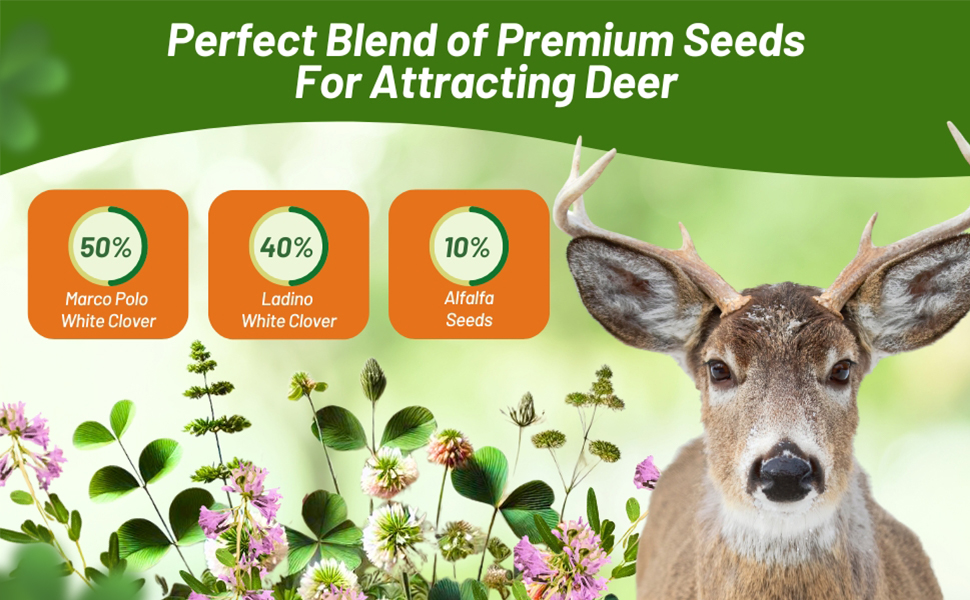
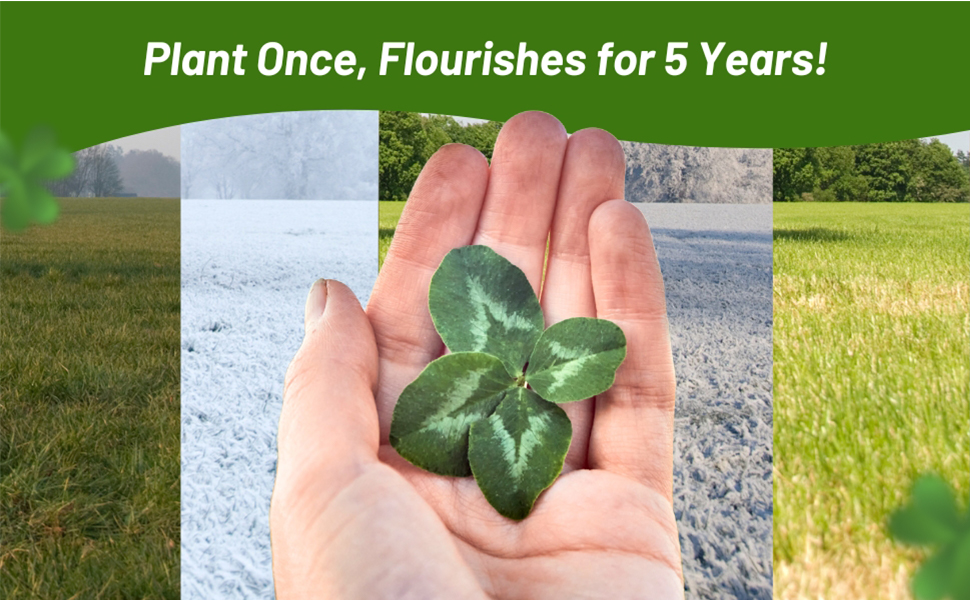
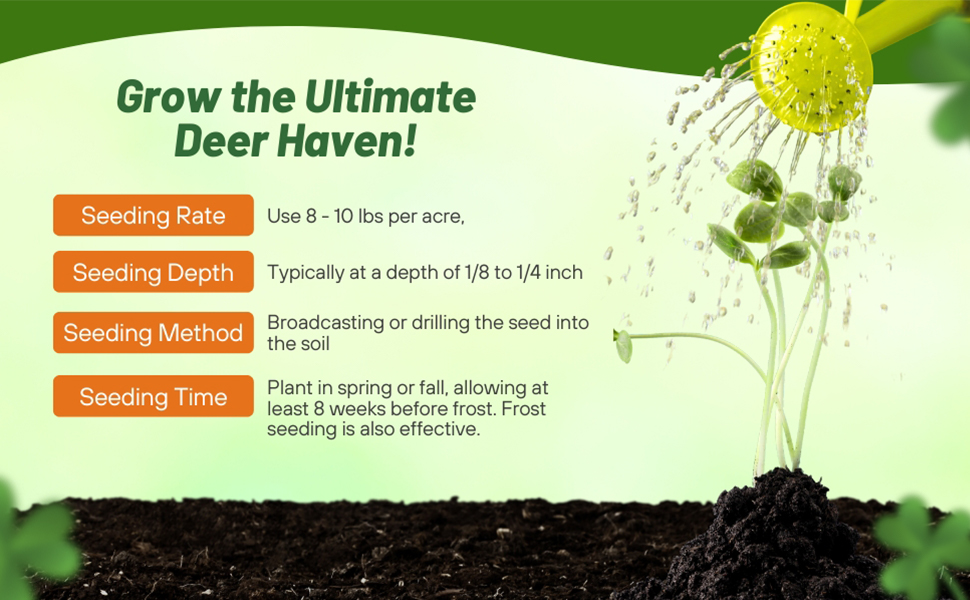
Marco Polo White Clover
Is the ideal variety for a combination of grazing and cutting. It is early in spring growth and will yield equally over the summer period. Marco Polo has shown to have good cold tolerance and a high resistance to the diseases that attack clovers in mild winters with changing temperatures. Marco Polo is an intermediate clover with medium to large leaves with a strong and erect growth making it an ideal deer food plot seed. White Clover can be planted in the spring or the fall. If planted in the fall, allow at least 8 weeks before the killing frost. Frost seeding also works well.
Ladino White Clover
A large white clover (terrific deer food) which makes up about half the total white clover acreage in the U.S. Its high nutritive value and palatability make it a popular choice in pasture mixtures. It is not deep rooted, and will not tolerate much drought. It is two to four times as large as common white clover so it can produce much more forage then common white clovers.
Alfalfa
Alfalfa is one of the most important legumes used in agriculture. However, alfalfa has a wide range of adaptation and can be grown from very cold northern plains to high mountain valleys, from rich temperate agricultural regions to Mediterranean climates and searing hot deserts. Alfalfa lives from three to twelve years, depending on variety and climate. It is a cool season perennial legume, growing to a height of about 3 feet. It resembles clover with clusters of small purple flowers. It also has a deep root system sometimes stretching to 15 feet. This makes it very resilient, especially to droughts. Alfalfa is very high in protein which makes it a great addition to any deer food plot seed blend.
Inoculated Seed - Our Clover King seed has been coated with an inoculant for better establishment. Nitrogen fixation is a one of the key values found in legumes and can only occur with the proper inoculation. Although many strains or Rhizobium may be present in the soil, all are not equally beneficial. With Nitro-Coat® each seed is inoculated with the correct Rhizobium strains and coated through a proven process that ensures a very high level of successful inoculation. A key to any successful establishment and early seed development is moisture. Nitro-Coat® is naturally water absorbent and helps attract soil moisture to the seed, getting your stand established quickly. This coating process which Outsidepride utilizes, assures that only the top-performing and crop-specific rhizobia will be applied to ensure your clovers reach maximum nodulation, stand establishment, and yield potential. With Nitro-Coat® each seed is inoculated with the correct Rhizobium strains and coated through a proven process that ensures a very high level of successful inoculation. The weight of the clover seeds will contain approximately 34% coating material that contains the inoculant and water holding material for better establishment and viability of the seed. There is no difference in the seeding rates between the coated and raw seed due to the increased germination and viability of the bulk clover seeds that are coated and inoculated. This coating material is not OMRI certified.

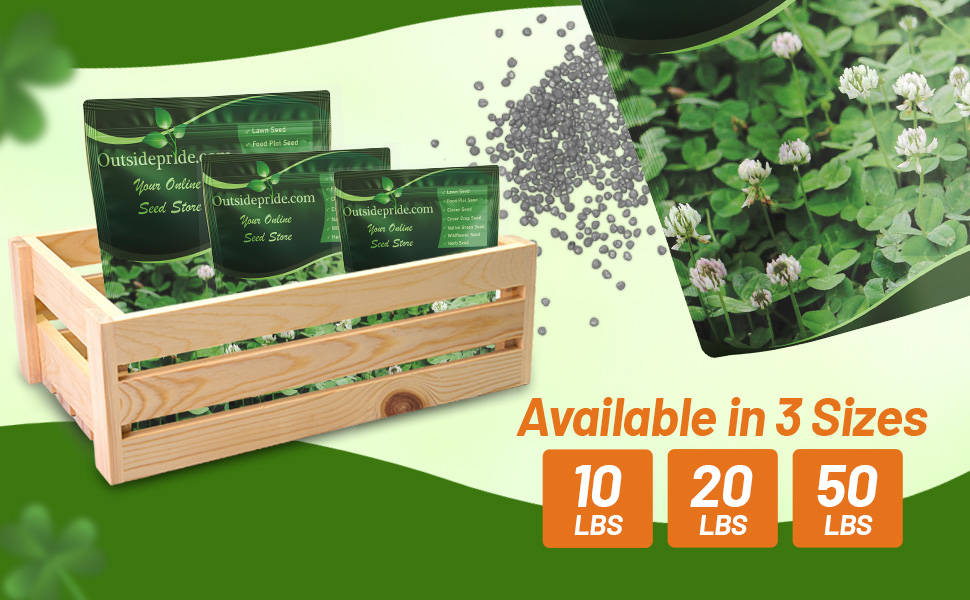
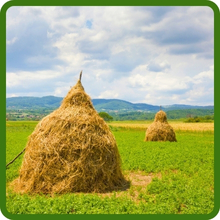
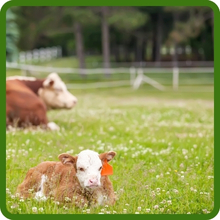
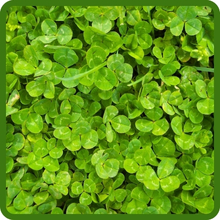
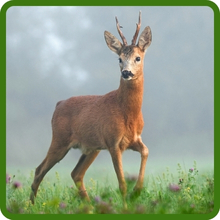
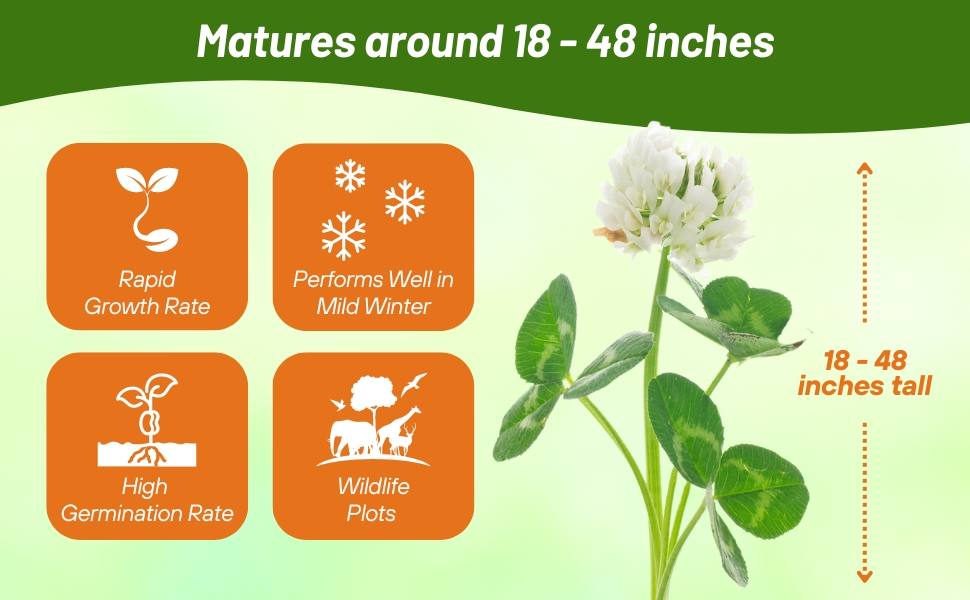

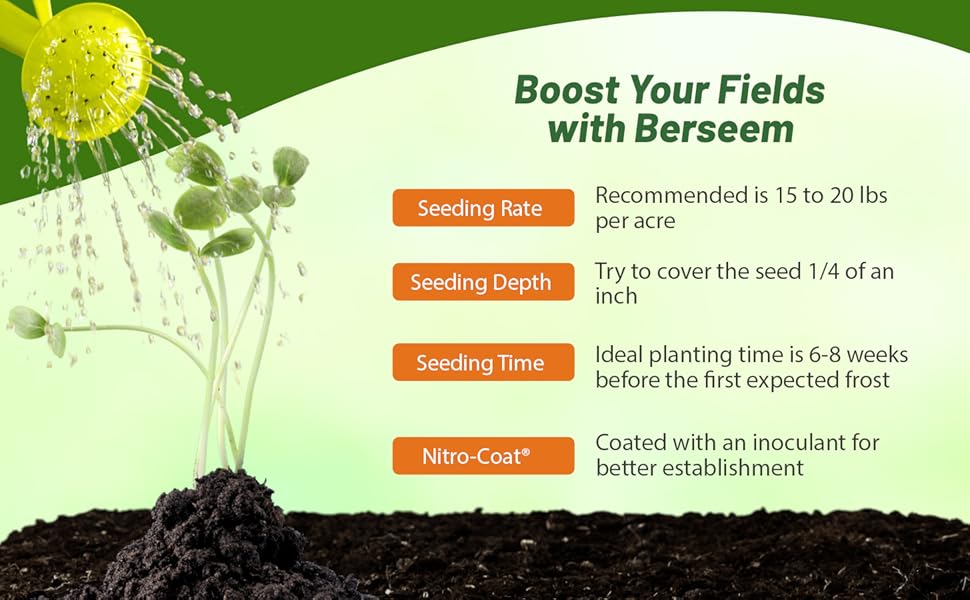
WHAT IS BERSEEM?
Berseem Clover (Trifolium Alexandrinum) - Berseem is a fall-planted clover that does best in heavier soils that may stay wet for long periods. Good for wildlife, cattle forage and as a soil builder. Berseem thrives in loams and clays with a pH of 6.5 - 8.5 and tolerates poorly drained soils.
HOW CAN IT BE USED?
Hay Plantings - In the south, this extends the range of usage on fall plantings in to Tennessee and Southern Missouri. By fall planting instead of spring you can get at least one additional forage cutting. That can translate to more than $200 per acre in extra revenue.
In the north you can plant up to a month earlier than traditional berseem clover. As berseem greatly resembles alfalfa in appearance and quality, you can utilize it to seed into winterkilled areas in your alfalfa hay fields or fill in declining stands. You can also utilize berseem clover as a nurse crop for spring plantings. Research has shown that by adding 5 lbs of berseem clover to your spring alfalfa can increase yield and quality up to 25%!
Pasture Usage - Berseem clover has been shown to not cause bloat when directly grazed. Recently Mississippi State University analyzed daily live weight gains on cattle grazing with straight berseem plus annual ryegrass. That research will be presented shortly. Already noted was that berseem increased nitrogen in the soil and subsequent plantings of sorghum-sudan showed increased vigor and productivity due to the nitrogen created by the clover in the soil.
Emergency Forage - Berseem clover is quick to establish, non-bloating, and has a forage quality similar to alfalfa. In short-term applications, Frosty can out-yield alfalfa by 25% in a one-year rotation. Berseem clover is the perfect product for your short-term pasture needs.
Wildlife Plots - Berseem clover establishes quickly, immediately drawing deer and other wildlife to it. In research, berseem was preferred by deer over all other clover varieties. It is recommended for deer plot mixes in the southern U.S. and will provide forage thru April in most areas, improving the health of wildlife. Mississippi State forage team states that the healthier the birth the healthier the offspring, which promote a larger deer size later in life. Frosty's nutritional qualities contribute to a larger deer size!
Cover Crops - Berseem clover is excellent for cover crop usage in the South. The early season biomass production makes it the ideal legume for cotton and corn rotations. Frosty can contribute as much as 100 lbs of nitrogen per acre by early March. Not only are you improving the soil, but the nitrogen benefit offsets the seeding costs!
Final Thoughts - Berseem clover seeds have been long used in the South for forage. Berseem forage contains from 18 to 28 percent crude protein, which is very comparable with alfalfa. It is also gaining great popularity in the midwest as a cover crop. Berseem has tremendous potential for providing high quality forage and improving soil conditions as a green manure crop because of its fast growth characteristics and capacity to fix nitrogen. Although Berseem grows in a variety of soils, medium-loam soils that are slightly alkaline will produce the best crop. It is moderately resistant to saline conditions and appears superior to alfalfa and red clover in salt tolerance.
Inoculated Seed - Our Berseem clover seed has been coated with an inoculant for better establishment. Nitrogen fixation is a one of the key values found in legumes and can only occur with the proper inoculation. Although many strains or Rhizobium may be present in the soil, all are not equally beneficial. With Nitro-Coat® each seed is inoculated with the correct Rhizobium strains and coated through a proven process that ensures a very high level of successful inoculation. A key to any successful establishment and early seed development is moisture. Nitro-Coat® is naturally water absorbent and helps attract soil moisture to the seed, getting your stand established quickly. This coating process which Outsidepride utilizes, assures that only the top-performing and crop-specific rhizobia will be applied to ensure your clovers reach maximum nodulation, stand establishment, and yield potential. With Nitro-Coat® each seed is inoculated with the correct Rhizobium strains and coated through a proven process that ensures a very high level of successful inoculation. The weight of the clover seeds will contain approximately 34% coating material that contains the inoculant and water holding material for better establishment and viability of the seed. There is no difference in the seeding rates between the coated and raw seed due to the increased germination and viability of the bulk clover seeds that are coated and inoculated. This coating material is not OMRI certified.
Seeding - Berseem looks much like alfalfa and Berseem plants usually grow 20 to 30 inches tall. Berseem clover seeds will establish the best on a firm, well-prepared seedbed. Try to cover the seed 1/4 of an inch or cultipack prepared seedbeds to press the seed into the soil surface and to conserve moisture. The recommended seeding rate for Berseem clover seed is 15 - 20 pounds per acre.
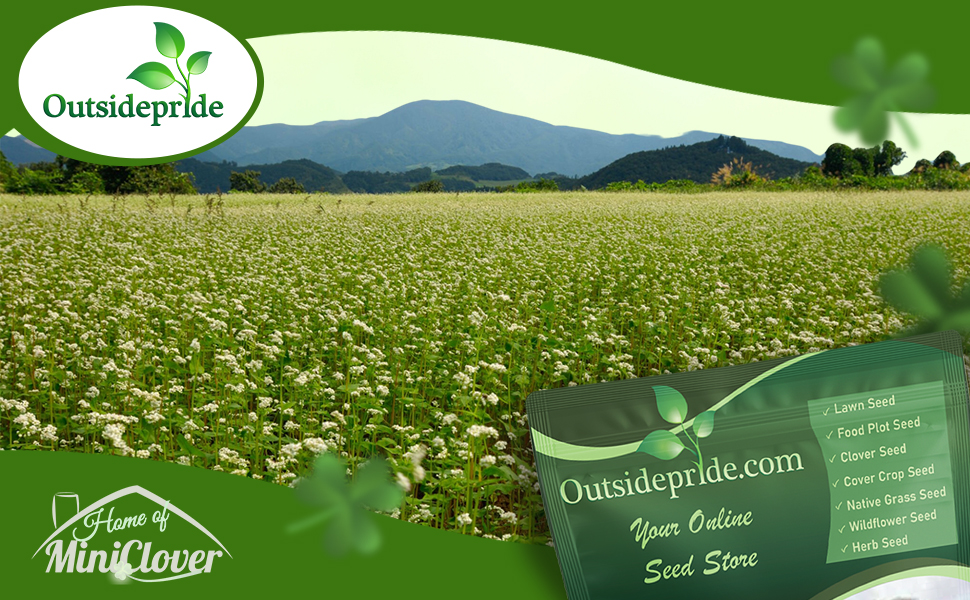
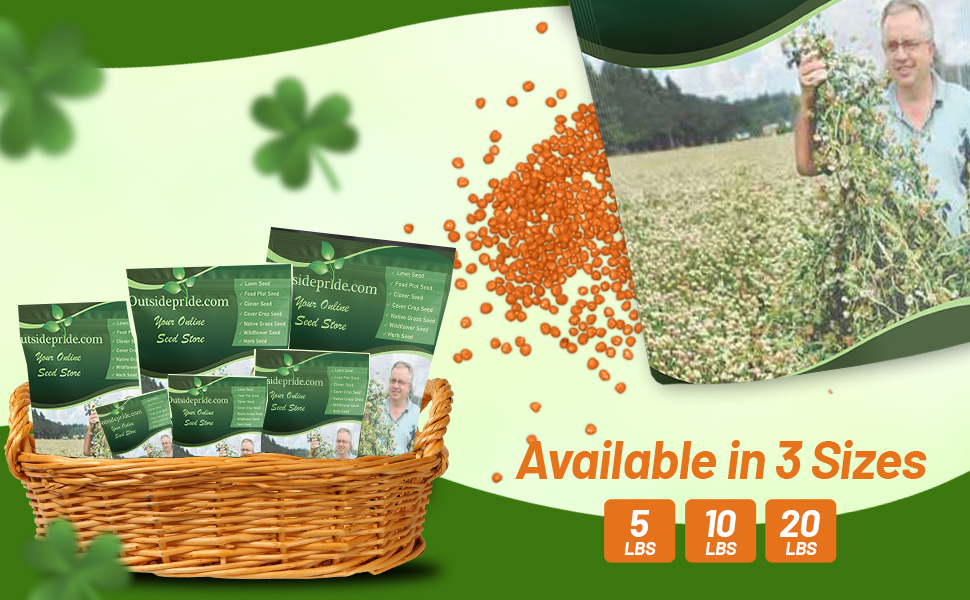
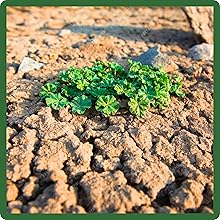
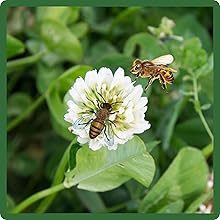
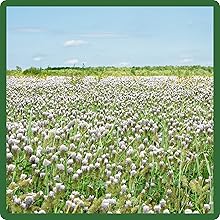
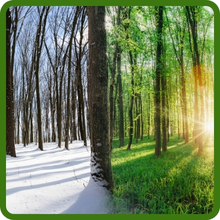
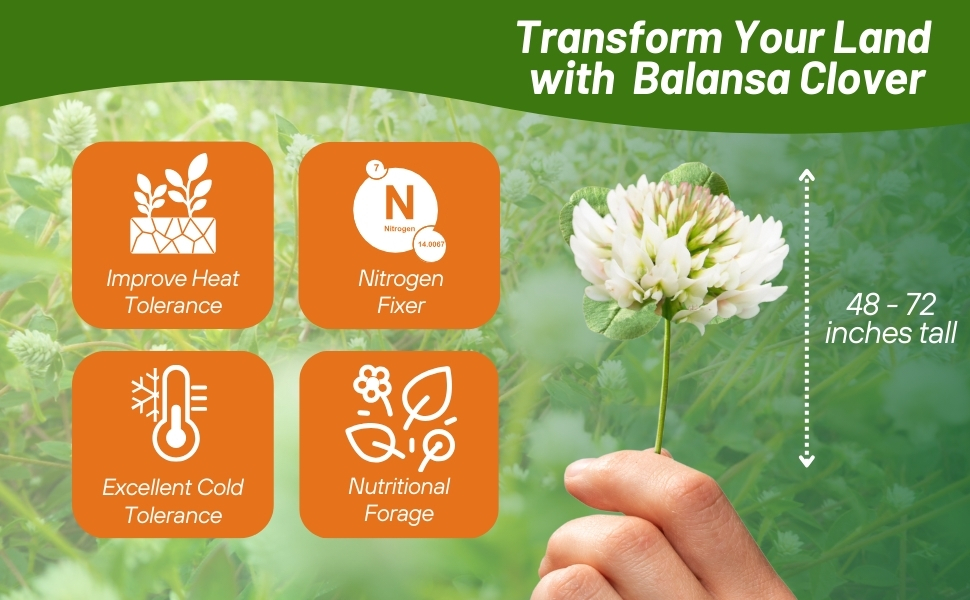
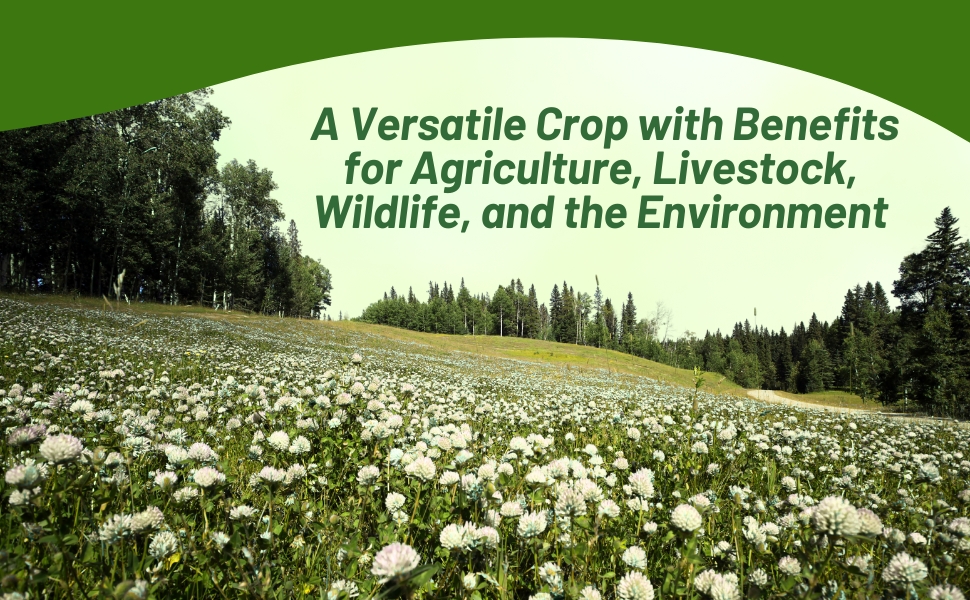
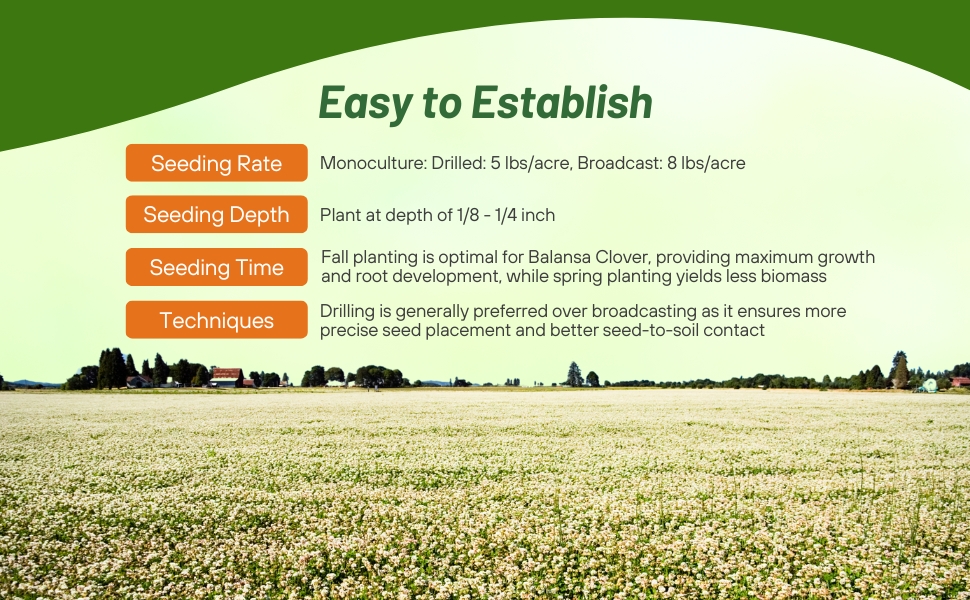
Fixation Balansa Clover (Trifolium Michelianum Savi) - If you are looking for a Bio-Massive clover, than look no further! This exciting and revolution clover is like no other on the market. Balansa clover is open pollinated. Flowers vary from white to pink and are attractive to bees. Leaflets are variable, with about 40% having markings. Leaf margins are commonly serrated. Allowing balansa clover to grow for 40 days past first bloom every 3 to 4 years will allow stands to persist indefinitely in no-till systems.
-
Increases cash crop yields by nourishing the soil and reducing the need for expensive inputs.
- Capable of setting more than 100 units of Nitrogen per acre
- Large amount of high-quality biomass increases soil organic matter with a thick mat of organic mulch
- Growth of up to 3ft high with stems up to 8ft long suppresses spring weed growth by shading the soil and out-competing weeds for water and nutrients
- Later maturation (up to 28 days) reduces likelihood of unwanted reseeding
-
Increases livestock mass and quality.
- Relative Feed Values as high as 277
- Crude protein levels range from 22% - 28%
- 5,250 lbs of extremely digestible dry matter in a single cutting
-
Iis an economical solution.
- Small seed size reduces cost/ acre (see planting instructions)
- Capable of reseeding under proper management
- Later maturation allows for multiple cuttings/grazings
- Growth pattern accommodates intensive grazing regimes
-
Protects valuable top soil.
- Deep tap root breaks up soil compaction and make it drought tolerant
- Increases the water-holding capacity of soil
- Bio-massive growth and root system shades soil and prevents erosion and run-off
- 18" of root growth in just 45 days
-
Compliments entire ecosystem.
- Has been shown to be a nutritious and favored food source for deer and waterfowl
- Attracts beneficial pollinators and insects
-
Is geo-sensitive.
- Performs well in wet soils (including short periods of flooding)
- Survives under snow or in temperatures as low as 5 degrees without snow
- Can be either fall sown or frost seeded
- Tolerant to drought, heat, low fertility and shade
- Thrives in acid-soils where other clovers will not (well suited for soils with pH values ranging between 4.5 to 7.5)
-
Complements existing or integrated crop rotation systems.
- Grows well in mixes with other cover crops - small seed size and hardiness enable it to be successfully broadcast and established with existing forage.
- Nitrogen collected in plant material is annually released back into the soil for use by grasses and crops.
- Suitable for no-till planting and in ley farming dryland systems
- NOT a host for soybean cyst nematodes
Balansa clover (Trifolium michelianum) is somewhat of a newcomer to the deer food plot scene. Historically, its primary use has been as a cover crop in the agricultural community, but it has many unique qualities that can make it an excellent choice as a deer forage depending on your food plot objectives and property features.
It produces a large tap root that often runs 2- to 3-feet deep. This can help break through hard pans that may have developed in your food plots over time due to repeated tillage, which can cause soil compaction and limit forage production. This type of root system improves soil drainage and increases microbial growth, which improves overall soil quality. The root system also makes it drought tolerant and perfect for water conservation.
Balansa prefers soils with a neutral pH (greater than 6.0) and grows well in a wide variety of soil types. It is also fairly tolerant of dry conditions thanks to its large tap root that can access soil moisture. Conversely, perhaps one of the best attributes of balansa is its ability to thrive in poorly drained soils and even periodic standing water! This is important because very few quality deer forages have this ability, and balansa provides an excellent option for hunters and food plotters whose property is bottomland or the food plots are soggy during winter.
Being an annual, balansa germinates relatively quickly compared to other clovers, so it provides excellent early season attraction and hunting opportunities. As previously mentioned, Balansa is rated extremely high in terms of deer preference and digestibility. Crude protein levels are very high and have been reported in the 25 to 30 percent range.
Because of its aggressive nature, balansa clover tolerates heavy grazing pressure very well. When planted in the fall, you can expect quality forage to be available until the following May or early June – depending on where your property is located geographically – which captures the early antler growth period. In terms of forage production, you can expect to produce 2 to 3 tons per acre in dry weight during its growing season if managed properly, which is impressive.
Seeding Rate Monoculture:
5 lbs/acre drilled
8 lbs/acre broadcast
Seeding Rate In Mixes:
3 lbs/acre drilled
5 lbs/acre broadcast
Planting Depth: 1/8 - 1/4 inch
Ideal Soil: Soil pH of 4.5 - 7.5, and tolerates poorly drained soils with moderate salinity.
Inoculated Seed - Our Balansa clover seed has been coated with an inoculant for better establishment. Nitrogen fixation is a one of the key values found in legumes and can only occur with the proper inoculation. Although many strains or Rhizobium may be present in the soil, all are not equally beneficial. With Nitro-Coat® each seed is inoculated with the correct Rhizobium strains and coated through a proven process that ensures a very high level of successful inoculation. A key to any successful establishment and early seed development is moisture. Nitro-Coat® is naturally water absorbent and helps attract soil moisture to the seed, getting your stand established quickly. This coating process which Outsidepride utilizes, assures that only the top-performing and crop-specific rhizobia will be applied to ensure your clovers reach maximum nodulation, stand establishment, and yield potential. With Nitro-Coat® each seed is inoculated with the correct Rhizobium strains and coated through a proven process that ensures a very high level of successful inoculation. The weight of the clover seeds will contain, on average up to 50% coating material that contains the inoculant and water holding material for better establishment and viability of the seed. There is no difference in the seeding rates between the coated and raw seed due to the increased germination and viability of the bulk clover seeds that are coated and inoculated. This coating material is not OMRI certified.

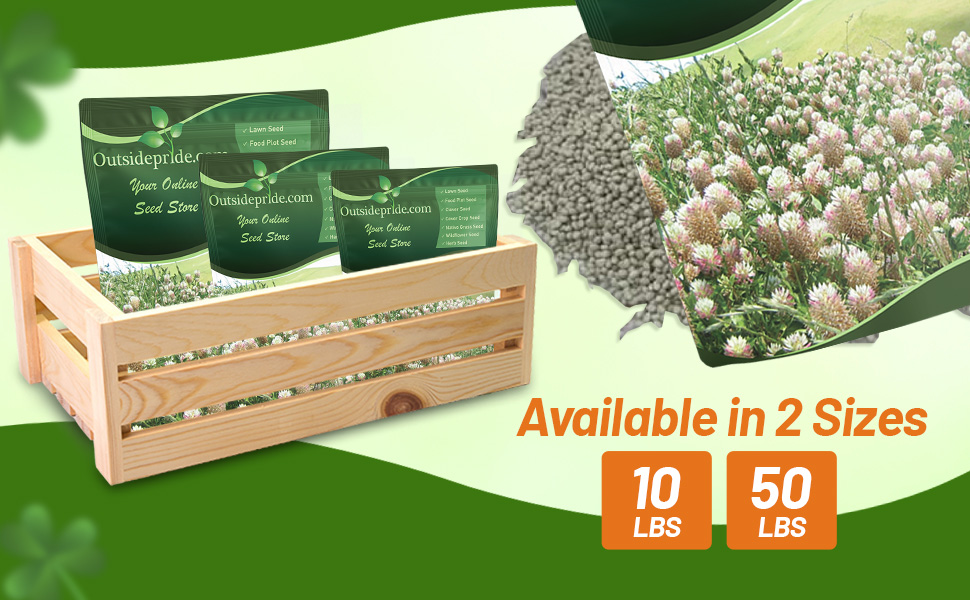

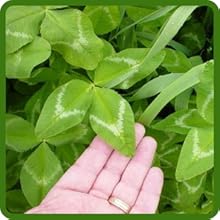
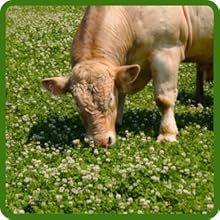
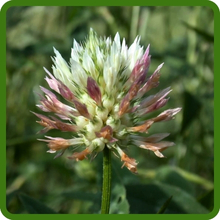
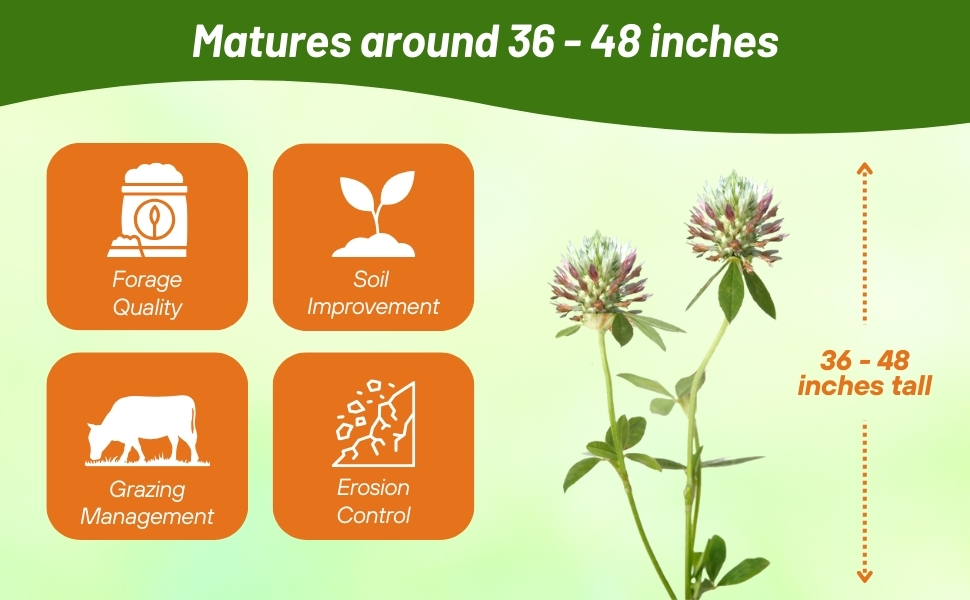

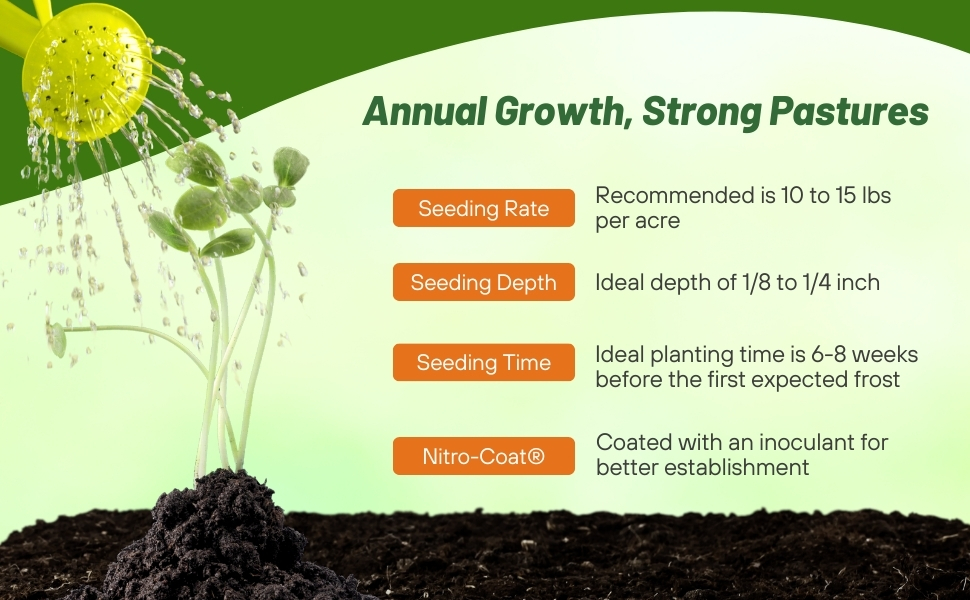
Arrowleaf Clover (Trifolium Vesiculosum) - Zulu arrowleaf clover is a legume can be used for grazing, hay, haylage, or greenchop, but it is most commonly grown for grazing. A good clover seed stand often produces 1 1/2 to over 2 tons of dry forage per acre, which is equal to or better than other annual clovers commonly grown in the United States. Arrowleaf clover can grow up to four feet tall if not grazed.
Arrowleaf clover is a productive and drought tolerant winter annual legume that originated in the Mediterranean region. It is widely adapted from southern Tennessee to the Florida panhandle and from east Texas to the Carolinas. It can also be grown in humid areas in Washington, Oregon, and northern California from bulk clover seeds. Forage produced by this clover is not liked by horses, but it is relished by cattle, deer, and most other grazing animals.
Arrowleaf clover does best on well-drained, but not extremely droughty, soils. It is more sensitive to soil acidity than some clovers and is best suited to soils having a pH in the range of 6.0 to 6.5 and seedling emergence is delayed if pH is below 6.0. Iron chlorosis is a growth-limiting factor if the pH is higher than 7.5. This legume is especially well-suited to sandy Coastal Plain soils, but can also be productive on well-drained clay soils. It is less tolerant of wet soils than are many other clovers.
The ideal seeding depth for arrowleaf clover seeds is 1/8 to 1/4 inch. It is preferable for the seed to be on top of the soil than for it to be planted deeper than 1/2 inch. If the clover seed is planted too deep, it may not be able to sprout. Arrowleaf clover seed are small; about 400,000 seeds/pound. The recommended seeding rate for this clover seed is 10 to 15 pounds per acre.
Inoculated Seed - Our Arrowleaf clover seed has been coated with an inoculant for better establishment. Nitrogen fixation is a one of the key values found in legumes and can only occur with the proper inoculation. Although many strains or Rhizobium may be present in the soil, all are not equally beneficial. With Nitro-Coat® each seed is inoculated with the correct Rhizobium strains and coated through a proven process that ensures a very high level of successful inoculation. A key to any successful establishment and early seed development is moisture. Nitro-Coat® is naturally water absorbent and helps attract soil moisture to the seed, getting your stand established quickly. This coating process which Outsidepride utilizes, assures that only the top-performing and crop-specific rhizobia will be applied to ensure your clovers reach maximum nodulation, stand establishment, and yield potential. With Nitro-Coat® each seed is inoculated with the correct Rhizobium strains and coated through a proven process that ensures a very high level of successful inoculation. The weight of the clover seeds will contain approximately 34% coating material that contains the inoculant and water holding material for better establishment and viability of the seed. There is no difference in the seeding rates between the coated and raw seed due to the increased germination and viability of the bulk clover seeds that are coated and inoculated. This coating material is not OMRI certified.

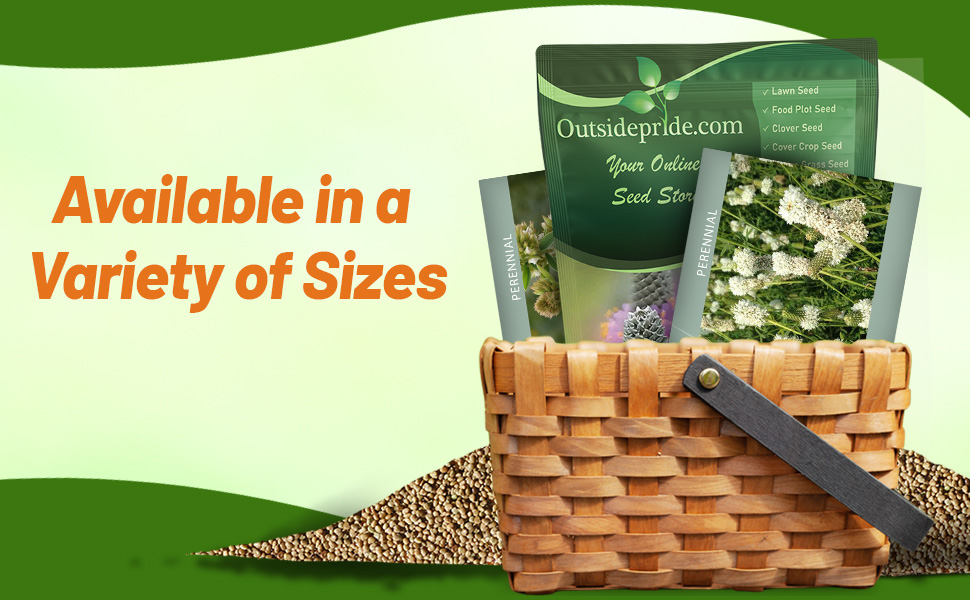
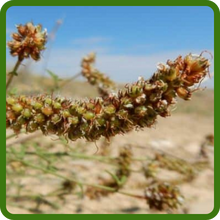
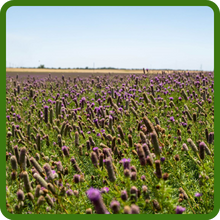
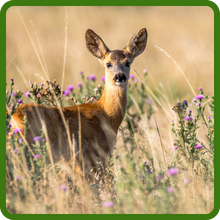
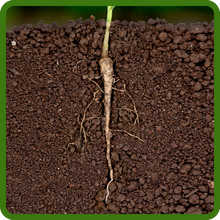
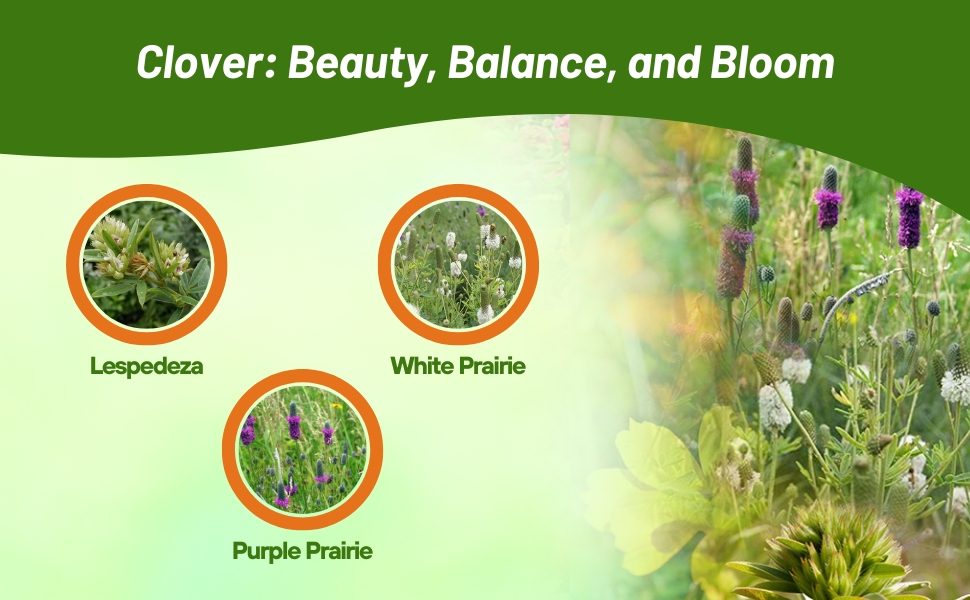
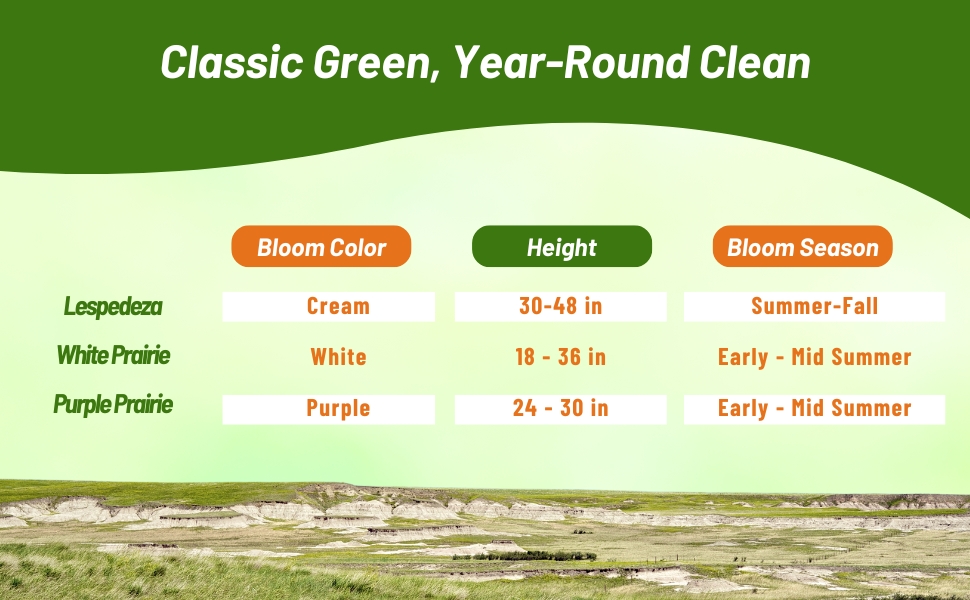
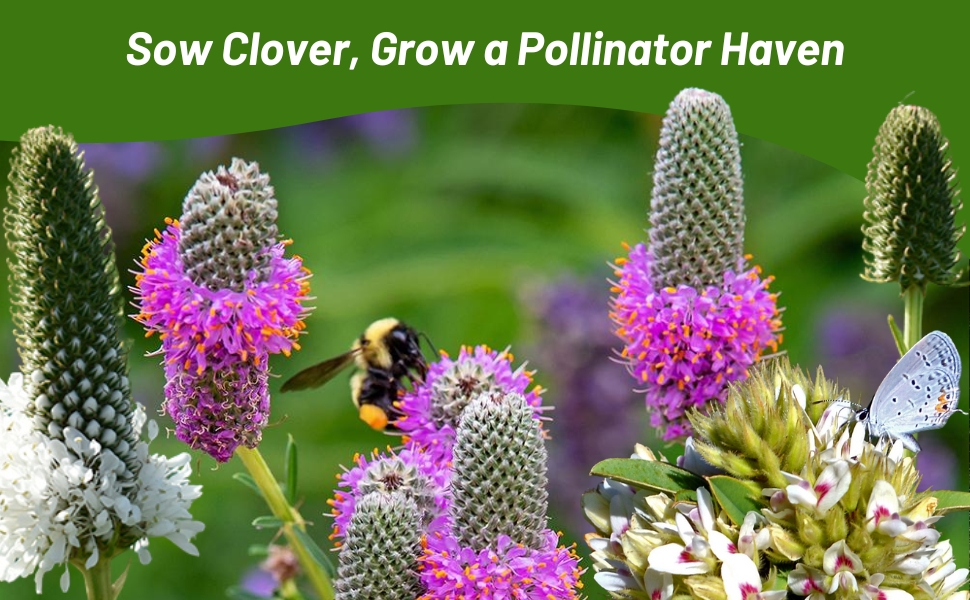
Lespedeza (Lespedeza Capitata) - Start Lespedeza seeds for a naturalized landscape setting. Also known as Round-headed Bush Clover, this beneficial flowering plant grows best in full sun and dry conditions. Lespedeza is adaptable to different kinds of soil that contain significant amounts of loam, clay, sand, or rocky material. Like many legumes, it adds nitrogen to the soil, and is easy to grow from flower seeds. Round-headed Bush Clover has good drought resistance; however, some of the lower leaves may turn yellow and fall off the plant if adequate water is not maintained.
Lespedeza is excellent for wildlife. It mixes well in a naturalized setting with a mix of wildflowers. Round-Headed Bush Clover is very attractive to both bees and butterflies. Because it is high in protein and palatable, many herbivores eat the plant during different growth stages, including deer, rabbits, groundhogs, and livestock. This can be a problem with establishment if these animals are not controlled. The flower seeds are eaten primarily by upland game birds including: the Mourning Dove, Bobwhite, and Wild Turkey. During the winter, the Lespedeza seed is eaten by song birds.
Lespedeza Capitata seed does well with a dormant fall planting. The flower seeds can be directly planted outdoors in the late fall where they will lay dormant until spring rains and warming temperatures will bring on germination. If planted in the spring, Round Headed Bush Clover seed benefits from a cold treatment for 3 - 4 weeks before sowing.
Approximately 8,000 seeds per ounce.
Planting Guide
TEMPERATURE
65F
AVERAGE GERM TIME
14 - 21 days
LIGHT REQUIRED
Yes
DEPTH
1/4 - 1/2 inch
SOWING RATE
3 - 4 seeds per plant
MOISTURE
Keep seed moist until germination
PLANT SPACING
12 - 24 inches
Flower Specifications
SEASON
Perennial
USDA ZONES
3 - 9
HEIGHT
30 - 48 inches
BLOOM SEASON
Summer and fall
BLOOM COLOR
Cream
ENVIRONMENT
Full sun to partial shade
SOIL TYPE
Loam, clay, sand, rocky, pH 5.6 - 7.3
DEER RESISTANT
No
FOLIAGE COLOR
Silvery green
LATIN NAME
Lespedeza capitata
Common Questions
What are some common uses for lespedeza capitata?
This plant is commonly used for forage, soil improvement, erosion control and as an ornamental plant for flower beds and borders.
Do I need to deadhead my spent blooms?
If you want to encourage more blooms you will need to deadhead your flowers.









Superior drought tolerance
The image to the left demonstrates the drought tolerance of Miniclover and its ability to pass that benefit on to turf grass. The highlighted plot is a mixture of typical lawn grass and miniclover, the surrounding plots are all different kinds of popular lawn grasses.
After establishment, none of the plots were watered for two weeks! The picture was taken at the end of that two weeks. As you can see, the plot with Miniclover stayed healthy and green — not only the Miniclover itself, but also the turf grass it was mixed with benefitted from the deep Miniclover roots.
White clover remains greener much longer than lawn grasses do, in both drought and cold conditions. Lawns containing Miniclover are a brighter green earlier and later in the year. It has a good summer color, as it is particularly resistant to drought because of its deep rooting system.
Growing Conditions:
Miniclover is adapted to a wide range of climatic and soil conditions. It tolerates wet and partially shady conditions, as well as drought. However, it can only tolerate wet conditions as long as the area is not flooded for long periods. The type of shade normally occurring in parks and on golf courses is not a problem for Miniclover or other dwarf, low growing, microclovers. White clover can also help aerate the soil, thus reducing concerns over soil compaction. White clover tolerates compacted soil better than lawn grass does. It has longer roots, enabling it to access water at deeper levels than most lawn grasses. If you're interested in cheap, low-maintenance lawn alternatives to grass, Miniclover is the perfect solution and is easy to plant from bulk clover seeds. Add it to your existing lawn to improve overall lawn health or use as a complete lawn alternative.
If Miniclover is not cut then the leaf size increases, the more it is cut then the smaller the leaf size. When Miniclover or micro clover lawns are not mowed at all, the leaf size will be about 1/2 the size of White Dutch Clover. When it is mowed, new leaf heads form within a few days so it continually looks thick and lush. If the clover lawn is never mowed, it will get approximately 6 inches tall depending on soil quality, sunshine, water, temperature, etc. If you mow it, it will want to quit growing just slightly taller than the height it was mowed at. For example, if you mow it at a height of 3 inches, it will head back out and quit growing at a height of approximately 4 inches. In other words, you can almost "train" its growing height with infrequent mowings which is called, "plant elasticity". Usually, just after a few mowings it will stay in the 4" height range becoming a very dense, very lush, and very beautiful lawn or ground cover.
Wear Tolerant:
Testimonials:
- Great clover! grew really fast between my stepping stones...only regret is I should have bought more seed because they are out of it now.
- I dont remember when I first heard about Outside Pride, but it has been a family tradition to get wildflower seed mixes from them every year so when I needed to reseed part of my lawn and decided to go with clover this time, Outside Pride caught my eye. The mini-clover seed germinated in three to five days and has hung in there despite the ground being on the dry side of dessicated, not ideal moisture conditions at all ... and my Village DPW has banned lawn watering so all it gets is what I carry in a water-sprinkler can. If needed again in the coming Spring I will not hesitate to get more.
- I have 5 large dogs and we had a bad winter. Between them they practically destroyed the yard. I decided to plant the mini clover and the yard looks better than it has in years.
- I highly recommend this clover and look forward to not mowing next year.
- I live in a condo with a small back yard comprised of just planting beds along a paver pathway and patio. I have small dogs I wanted to find a better substrate for them (besides mulch) plus I wanted some more green to "liven up" the patio. So I tried to grow grass - but no luck. After doing a search on grass alternatives I learned about Mini Clover and decided to give it a shot. Two weeks later it is filling in nicely with minimal care. It is not a full covering yet but everywhere I have scattered seed it is growing evenly (both heavily shaded and full sun areas). When I started no grass was left and I had raked the soil prior to scattering the mini clover seeds using the scott's hand spreader (set on 1 smallest opening). Very pleased so far and I can't wait for it to become more established. Definitely would order these seeds again from Outsidepride again.
- I started off with just a big mud dirt pile for a back yard. I ordered these to cover the pathways I was making for my yard. They came in fast and lush. I had only bought one bag so was highly disappointed when i went to reorder some and they were out of stock.I bought some micro clovers instead of these to do another path, boy what a mistake that was. The mini clover grows faster fills in faster and yields far better then the micro. I was totally happy to see these get back in stock on amazon. ran off and bought three more bags.
- Seeds sprouted up nicely despite not having perfect weather conditions. I made sure I wet down the area well and covered with plastic to keep them moist while under the sun and then protected from the sudden cold that showed up; and they all sprouted up and are growing and thriving. I signed up with the company's website and received a coupon for 20% off ground covers and I am so impressed with this seed that I went ahead and purchased another 5 lbs. I have quite of bit of area I want to cover with this. I also checked on other mini clovers out there, Outside Pride has the most affordable seed.
- I love love love this clover. I've been planting it for about a year now. Partly it's mixed into my grass. This reduces the need for water and fertilizer. The biggest benefit is that it stays green with dog pee. Yay!! On the far side of my yard I've planted only clover between the pavers. It's a much brighter, prettier green than the thyme I have in that area. It's so easy to plant and maintain. Just a once a month mow or cut. Germinates quickly. I'm hoping to cover most of my backyard in clover where I used to have lawn to help California deal with drought. My friends mock me but I tell you I love my clover!
- Sprouted in a couple of days after just throwing them on the ground.
- Had sprouts within a week. Planted in December in southern California. Can't wait to see them fully grown. Going to order more to replace grass in my backyard.
- We live in SoCal and used this as a lawn substitute for the dry seasons here. It sprouted after 4 days and has grown lush after 4 weeks. We airated the yard with a Home Depot rental, seeded with a handheld spreader, and raked lightly. Once it grew in, we only needed to water once a week. Great value.
- I received by package quickly. It was nicely packaged. I was able to overseed and get the clover to start sprouting in 7 says. It took 2 weeks of daily watering, but it is well established.
- Re-seeding our rental backyard to fill in the holes in the grass. This stuff took off! We just threw it on the ground with literally zero prep and we have hard, compact clay. It grew! We are pretty happy! Uses less water than grass and needs less cutting! If you see clover in your yard at all, this stuff will probably grow. We live in the pacific northwest and so we barely have to water our lawns as it is but this will be a nice grass replacement when the drought sinks in.
- Took really well in my yard last fall, stayed green through the winter and is thriving now. I have three chickens that are very destructive, I fenced them off for a month while it was coming in. Once I let them at it they tore up a section where the ground was really soft, but other than that it has held up really well against them and a dog. I haven't seen the flowers yet, but I'm very happy.
- Great little clover growing in with my fesuce grass. I planted it to add nitrogen into the soil. I did not want to add inorganic fertilizers and stinky organic manures to the grass as we love hanging out in the back yard. Will update as it matures and let you know if it helps the fescue be greener.
- Great product, especially if you don't want to use chemical fertilizers for your grass! This is actually how I found out about this product because it naturally produces nitrogen, which feeds the grass. We've used approximately 5 - 7 pounds on our lawn. This did a great job of filling in areas of our lawn where moss had taken over during a wet, warm winter, and now that we are coming to the end of a record hot summer here in the PNW, I can say that the miniclover has stood up really well! I think it's good to mix the miniclover with grass--we have one area where we mixed grass seed with miniclover and used some compost as a base, and it grows so thick and fast--really amazing.
- I planted miniclover to supplement my grass in the very poor soil of the back yard of my small apartment building. When neighbors set down searing hot bbq lids on the lawn, everything was burnt in a nice circle that matched the weber lid perfectly. The miniclover came back up within a few days and is the only vegetation in that circle, the grass still hasn't come back two weeks later.
- What can I say besides, WOW! I bought Mini Clovers to plant in my fairy garden and I couldn't be happier with the current results! I planted these Saturday evening and by Friday (today) they are well established and growing like crazy, in less than a week. Everyone in my house is stunned by how fast they have grown and how they have turned out! I will be buying these again in the future for my fairy gardens! I highly recommend them to you if you are looking to buy! I couldn't be more pleased!!
- Seems to have germinated well, and does provide nice mini clover leaves. Even sprouted among the moss in one part of my "lawn" - hopefully it will take over there instead of the moss. Haven't seen it flower yet.
- Baby clovers are coming up! I hoed the dirt, watered, scattered the seeds, then covered with some wet grass clippings so the hot sun wouldn't burn them. They're all coming up. Looks good so far.
- Fan freaking tastic....my yard is a beautiful blend of clover and grass now.
- These white clovers are beautiful in your back yard.
- I seeded right over my lawn about six months ago. The clover is coming in nicely and starting to replace the lawn. I love it! I am going to buy another bag to speed up the process!
- Grew quickly and spread quickly through my lawn. Stays lowers than regular clover. It has reduced how often I mow, water and fertilize my lawn.
- Love my Miniclover. It is the talk of the neighborhood!!!!!!!!! Pretty green, but I forgot that the rabbits would love it.
- The seed are good value and great quality, sowed it and it came up strong!
- Fantastic product
- Grew quickly and really nice.
- Not all of the seeds sprouted, but a majority did, and it filled in my yard nicely and with no effort. Looks great, I would buy it again.
- I have a yard where I have been trying to grow grass for 10 years. I have tried everything. But now that a couple of weeks have passed I see clover growth. the clover heads are very small indeed and they mix well with the tufts of grass I have here and there. I love that it returns nitrogen back to the soil so I hope to be able to plant some grass in there next year.
- After checking out all of the reviews, we decided to go ahead and purchase the seed. We bought the least amount just in case. We are very happy with the clover. With the first planting, we watered every day for 2 weeks. The seed was spouting within one week. After two weeks we backed off on the daily waterings. By then most of the seed had germinated and we had a good sprouting coming up. We did notice a few bare spots which were attributed to seed run off or misses in the seeding so we reseeded those spots. Again, we watered -- or nature rained -- everyday for a couple of weeks. The seeds sprouted very well. Now that we are in the fall rainy season, we are letting Mother Nature take care of the watering.
- I ordered the seed and spread it according to the directions it came with, and almost immediately had clover sprouting. Great quality product,
- I've spread these on our lawn as a nitrogen-feeding no-mow method in lieu of the usual non-native grass lawn. These grew to about the same height as the matted clover we see around on various lawns, and it looks great.
- Planted these in a big field (cleared 52 trees) to make space for my daughter's wedding reception. As stated in the instructions, the seeds need to stay wet for two weeks or so to fully germinate. That's been the only challenge. In areas that didn't get enough water (more sun?) they had to be sown again. But the ones coming up are cute and just what was needed. I'm looking forward to not having to mow it, too.
- After nearly two years my clovers are still going strong.
- Growing profusely!
- This stuff starts to grow within 24 hours. We're in 7b grow zone and have started to seed our entire yard with this stuff.
- Have bought several of the little beauties any my grass is green.....completely....for the first time in 38 years!
Seeding Rate
- New turf: Sow 1 - 2 pounds per 1,000 square feet
- Overseeding: Sow 1/2 - 1 pound per 1,000 square feet































